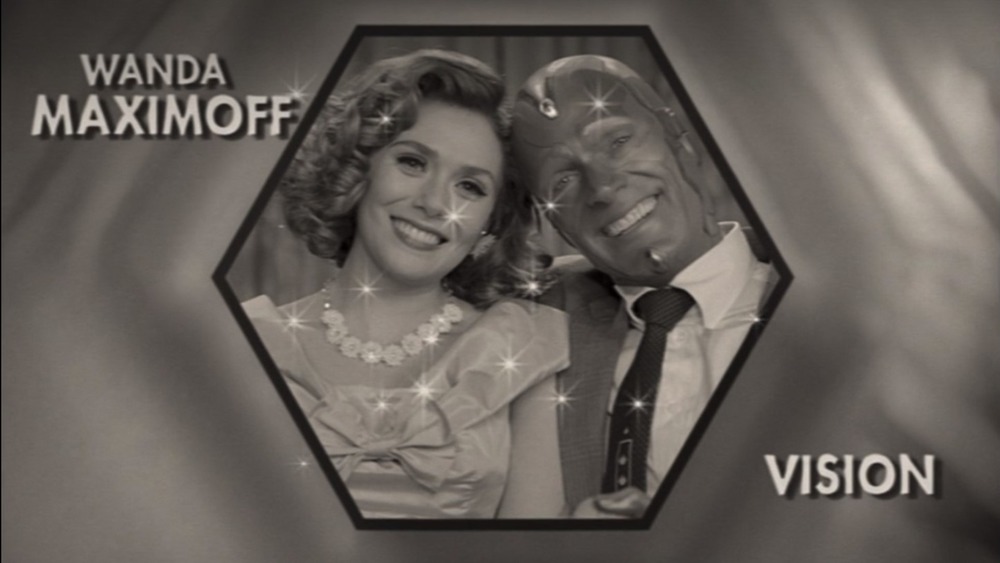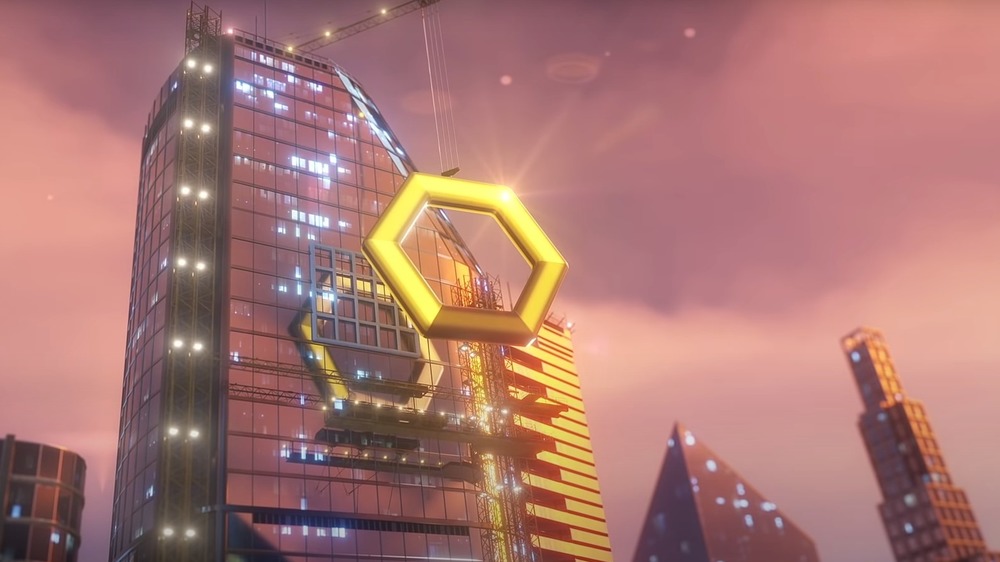Why The Hexagons In WandaVision Are So Important
In just two episodes, Marvel's WandaVision has already given viewers plenty to chew on, with its '60s sitcom throwbacks, its enigmatic fake ads, and its long overdue addition of Kathryn Hahn to the MCU employee phone tree. Unexplained, seemingly meaningful visual cues seem to be the show's happy place, and one of the most obtuse arcane signals thus far has to be the prominent display of hexagons.
The closing shot of WandaVision's premiere episode? Hexagon. Drawn out in the stars during the second episode's animated title sequence? Another hexagon. There's another one in the final moments of episode 2, after the eponymous couple has apparently shifted forward a decade aesthetically, implying that this is a theme we'll be seeing a lot of as time goes on and not just a one-off design choice.
Not to put too much weight on the series' shoulders, but based on the already staggering number of WandaVision Easter eggs, it doesn't seem like the kind of show where much is done by accident. With seven episodes left to go, we're still in early innings, but let's take a look at what the six-sided iconography could be indicating.
Could WandaVision be taking AIM at a new villain?
Wanda Maximoff (Elizabeth Olsen), better known in the pages of Marvel Comics as the Scarlet Witch, came from inauspicious beginnings. When she first popped up in the early days of X-Men, Wanda had "hex powers," which mostly consisted of inconveniencing people by making them spill their drinks all over themselves or stumble on falling debris. She was, in essence, the Brotherhood of Evil Mutants' tights-clad slapstick generator. Could hexagonal patterns be a subtle call out to her hex abilities?
Maybe, but that seems like small potatoes. Pin enough red yarn to your wall of conspiracies and you'll see that the more likely scenario is the MCU's reintroduction of a fan favorite evil organization — one that has traditionally used hexagons as part of its overall megalomaniacal oeuvre.
The certified M.O.D.O.K. creators at Advanced Idea Mechanics, or AIM, were last seen in Iron Man 3, and their absence has frankly started to feel a little conspicuous. There's a trail of breadcrumbs leading to their inclusion in WandaVision. The hexagons, for one thing, but also, remember the beekeeper? That mysterious beekeeper who crawled up out of the sewer? AIM troopers' uniforms bear a strong resemblance to beekeeper outfits, and their "science above all" credo and historically unscrupulous approach to achieving their goals would fit nicely with the citizens of Westview's bizarre "for the children" obsession, assuming that what they really mean is that everything is being done so that Wanda and Vision's (presumably entirely unique) children will be born in the first place.
It'll probably be a while before the subtext of WandaVision's story comes into sharp focus, but there are definitely a couple of possibilities as to what the showrunners are trying to communicate here. With any luck, we'll have our answers before the series finale on March 5.

